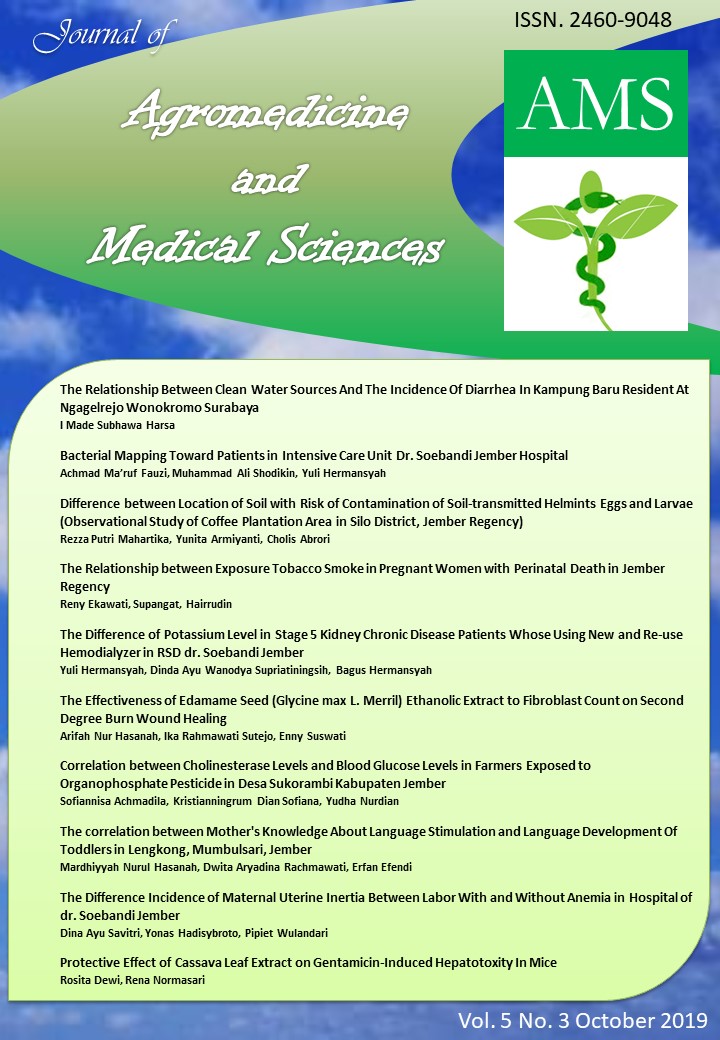Difference between Location of Soil with Risk of Contamination of Soil-transmitted Helmints Eggs and Larvae (Observational Study of Coffee Plantation Area in Silo District, Jember Regency)
DOI:
https://doi.org/10.19184/ams.v5i3.9468Abstract
Soil-transmitted Helminths (STH) is a group of worms whose life cycle through the soil. The species of STH are roundworm (Ascaris lumbricoides), whipworm (Trichuris trichiura), hookworms (Necator americanus and Ancylostoma duodenale), and Strongyloides stercoralis. STH causes helminthiasis that infects more than 1.5 billion people or 24% of the world's population. Jember has many plantation areas. One of the plantations in Jember is Garahan Kidul plantation located in Sidomulyo village, Silo Sub-district, Jember. Soil on plantations tends to be moist and loose. This condition is ideal for the development of STH eggs and larvae. The general purpose of this study was to differentiate the numbers of soil contamination by STH eggs and larvae in soil samples in the garden area, riverside, and worker housing taken in the coffee plantation area in Silo District, Jember. This type of research is observational analytic with cross sectional research design. Soil samples are taken in the garden area, riverside, and worker housing that has a loose or not hard and moist soil texture. The results of the observation found that there were 4 eggs of Ascaris lumbricoides, 6 eggs and larvae of hookworm, and 2 eggs and larvae of Strongyloides stercoralis. There is the same amount of soil contamination at the location of the garden and riverside, which are 2 positive samples or 5.71% with a density of 0.02 eggs and larvae / gram of soil, while the number of soil contamination at the workers housing location is 8 positive samples or 25.71 % with a density of 0.11 eggs and larvae / gram of soil. Data were analyzed using Fisher's test. The results of data analysis showed a value of p = 0.0693 (p> 0.05) so that there were no differences in the number of soil contamination by STH eggs and larvae in the garden and river bank locations and p = 0.042 (p <0.05) so that there were differences the number of soil contamination by STH eggs and larvae at the location of worker housing with the location of garden and riverside.
Keywords: STH, garden, riverside, wooker housing






















